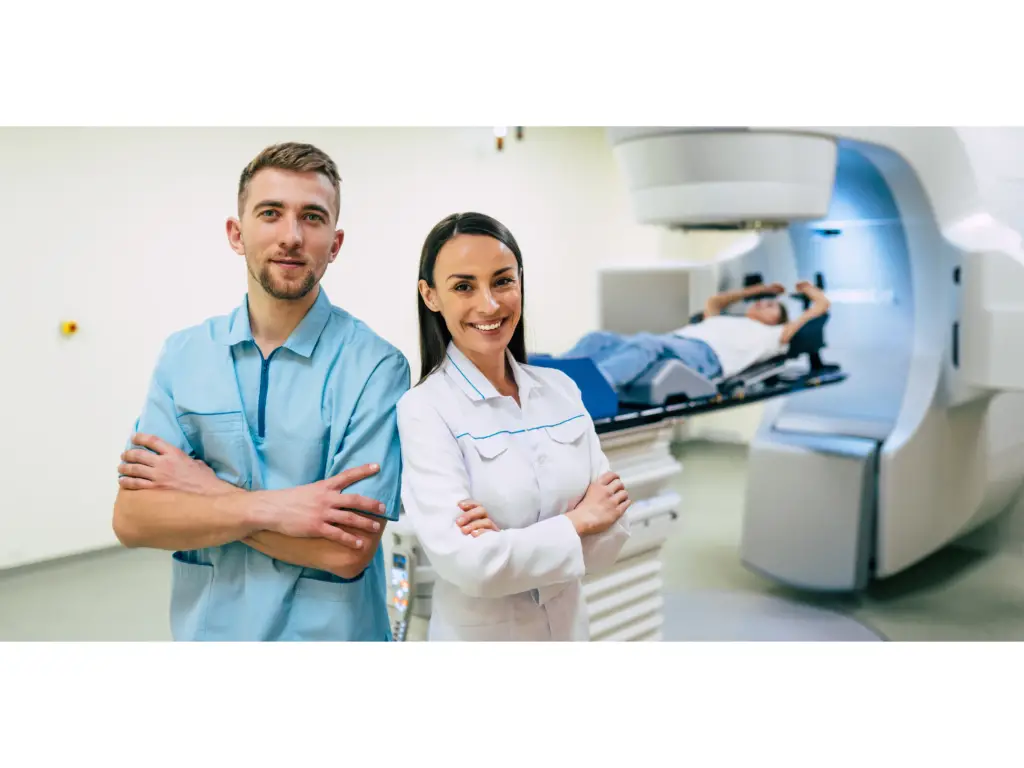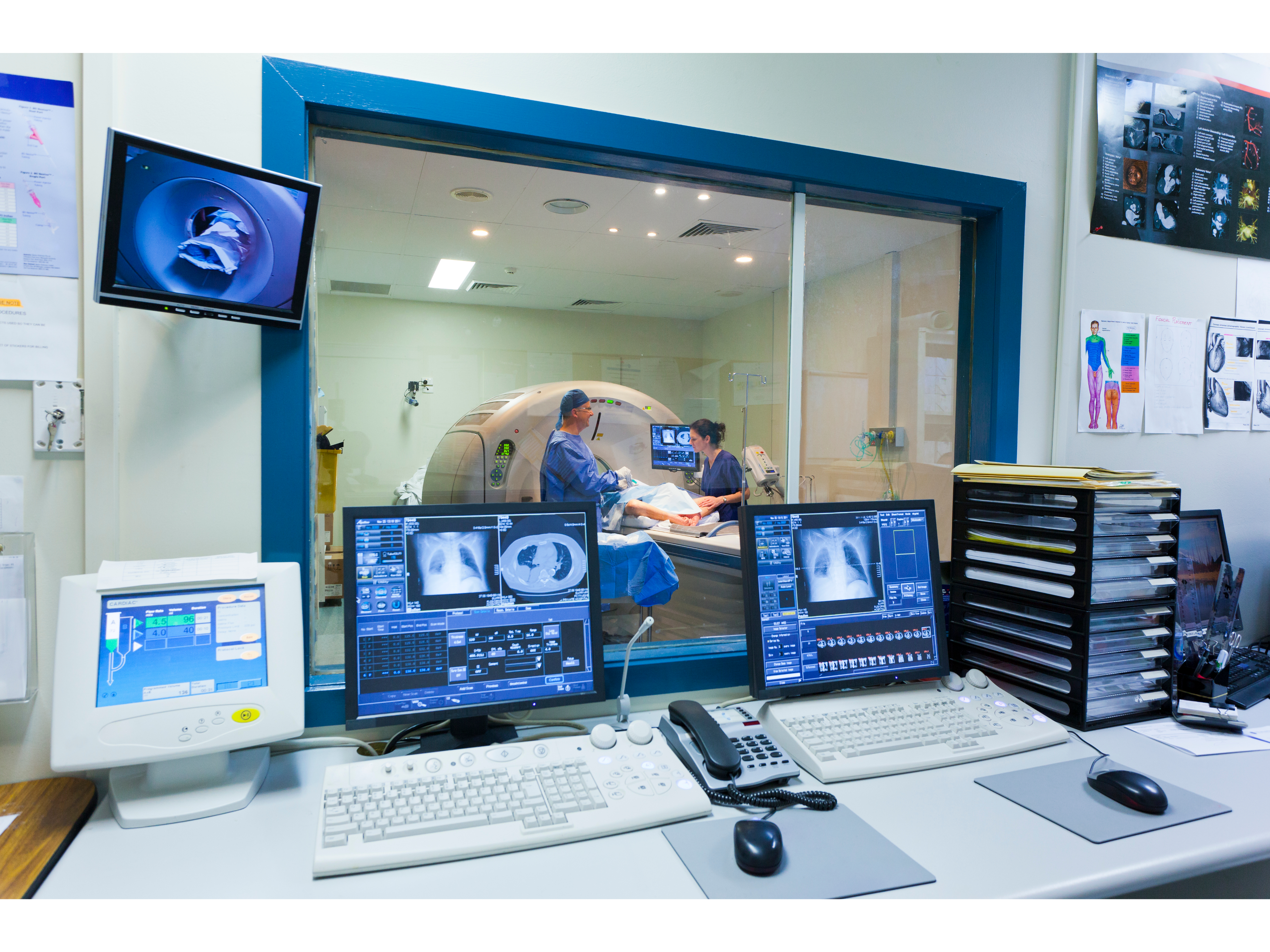The field of radiologic technology is in perpetual evolution, constantly pushing the boundaries of what’s possible in medical imaging. From AI-powered diagnosis to radiation-free procedures, exciting new advancements are changing the landscape of patient care and offering radiologic technologists thrilling opportunities. Let’s delve into some of the most groundbreaking technologies currently transforming the field:
1. Artificial Intelligence (AI) and Machine Learning (ML)
AI and ML are rapidly transforming radiology, acting as powerful allies to technologists and radiologists. From automated image analysis to abnormality detection and diagnosis support, AI algorithms are enhancing accuracy, efficiency, and workflow. For example, AI can flag potential issues in scans, allowing radiologists to focus on complex cases and improve early diagnosis. Moreover, AI-powered tools can generate detailed reports and automate administrative tasks, freeing up valuable time for patient interaction and education.
2. Advanced Visualization Techniques:
3D printing, virtual reality (VR), and augmented reality (AR) are revolutionizing how we visualize and interact with medical images. 3D-printed anatomical models, created from MRI or CT scans, offer surgeons tangible replicas for pre-surgical planning and patient education. VR and AR headsets immerse radiologists in 3D environments, facilitating intricate anatomical understanding and fostering collaboration with surgeons during complex procedures. These technologies enhance comprehension, improve diagnosis, and personalize the patient experience.
3. Point-of-care Ultrasound (POCUS):
Ultrasound technology is becoming increasingly portable and user-friendly, allowing for real-time imaging at the patient’s bedside. POCUS enables radiologic technologists to perform immediate assessments in emergency departments, critical care units, and even remote clinics. This immediate imaging capability streamlines diagnoses, facilitates targeted interventions, and improves patient outcomes, especially in time-sensitive situations.
4. Spectral Imaging:
Conventional X-rays provide anatomical information, but spectral imaging goes beyond, revealing the elemental composition of tissues. This advanced technology helps differentiate between healthy and diseased tissue, aiding in earlier cancer detection, characterization of tumors, and assessment of treatment response. For example, spectral CT can distinguish gout from other types of arthritis, leading to more precise diagnoses and targeted treatment plans.
5. Radiation-free Imaging Techniques:
Minimizing radiation exposure is a constant pursuit in radiology. Several promising technologies are gaining traction, offering alternatives to traditional X-rays. Photoacoustic imaging uses laser light to generate sound waves, providing information about tissue function and potentially detecting early signs of disease without radiation. Magnetic resonance imaging (MRI) advancements, like compressed sensing and parallel imaging, reduce scan times and minimize radiation exposure, especially beneficial for children and pregnant women.
6. Personalized Medicine and Precision Imaging:
Tailoring imaging protocols and treatments to individual patients is a growing trend. Radiomics utilizes advanced image analysis to extract quantitative features from scans, which can be linked to specific diseases and treatment responses. This information allows for personalized diagnosis, risk stratification, and targeted therapies, paving the way for precision medicine in radiology.
7. Cloud-based Image Sharing and Collaboration:
Secure cloud platforms are facilitating seamless sharing and collaboration among radiologists and technologists globally. This remote access to medical images fosters expert consultations, second opinions, and collaborative diagnosis, especially for rare or complex cases. Cloud-based platforms also enhance workflow efficiency and data storage capabilities, improving patient care and research opportunities.
8. Robotic-assisted Imaging:
Robotics is making its mark in radiology, assisting technologists during procedures and improving image quality. Robotic arms can hold X-ray tubes or ultrasound probes, reducing physical strain and ensuring precise positioning for consistent, high-quality images. This technology reduces operator fatigue, enhances patient comfort, and improves diagnostic accuracy.
9. Deep Learning in Image Reconstruction:
Deep learning algorithms are transforming medical image reconstruction, particularly in MRI and CT scans. These algorithms can reconstruct images from lower-dose scans, minimizing radiation exposure for patients while maintaining diagnostic quality. They also offer faster scan times and improved image resolution, leading to enhanced diagnostic capabilities and streamlined workflows.
10. Next-gen Detectors and Imaging Systems:
New detector technologies are improving image resolution, sensitivity, and speed in various imaging modalities. Flat-panel detectors for X-ray and fluoroscopy offer real-time imaging and lower radiation doses. Advanced MRI detectors are enhancing signal-to-noise ratio, leading to clearer images and shorter scan times. These advancements contribute to improved diagnostic accuracy, patient comfort, and overall efficiency.

The Road Ahead:
As research and innovation continue, the future of radiologic technology promises even more exciting possibilities. From personalized AI-driven imaging protocols to advanced nanotechnologies for targeted therapy, the field is poised to revolutionize patient care and improve health outcomes. Radiologic technologists are at the forefront of this transformative journey, equipped with cutting-edge tools and expertise to deliver exceptional patient care and contribute to groundbreaking discoveries.


